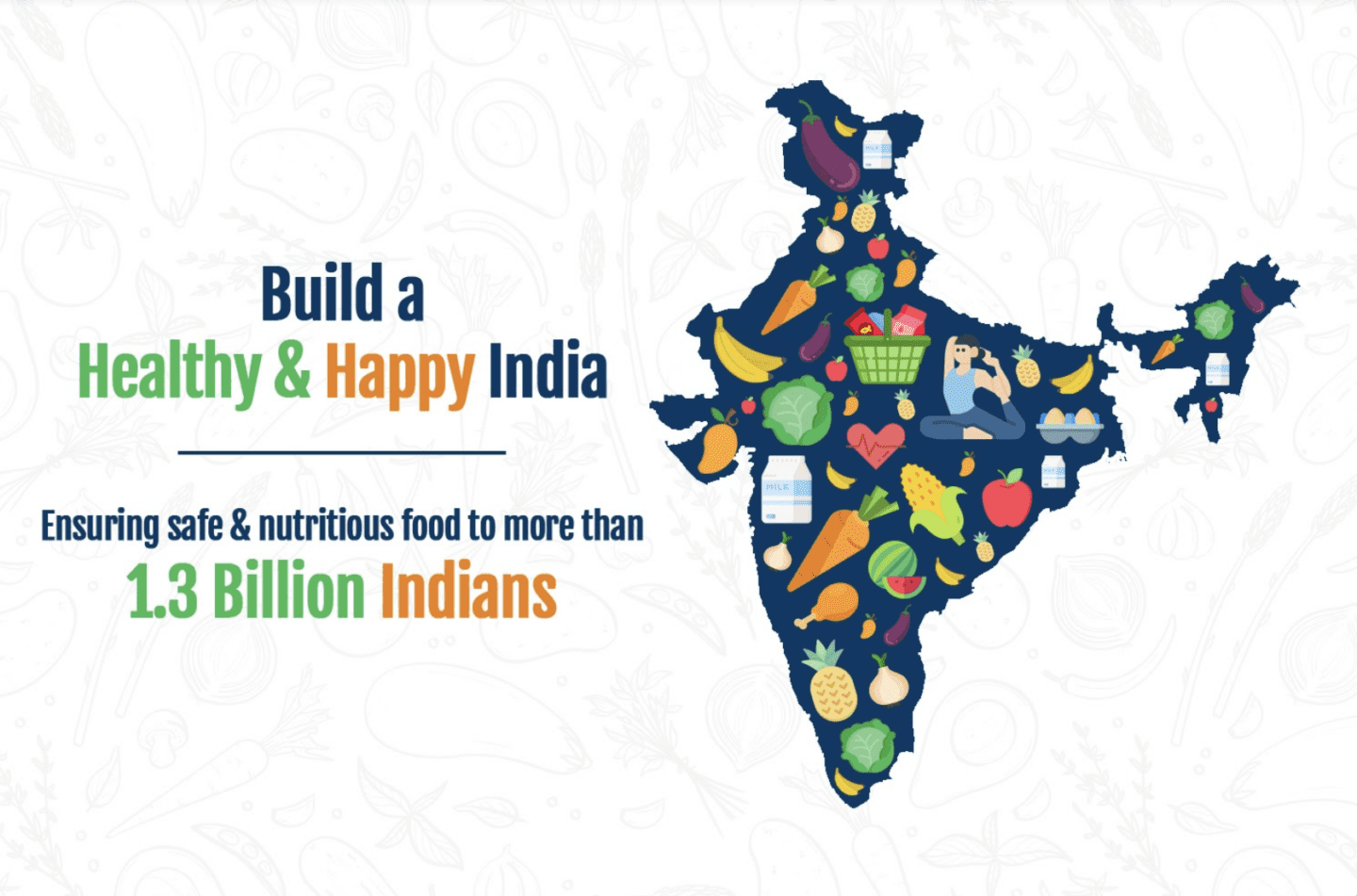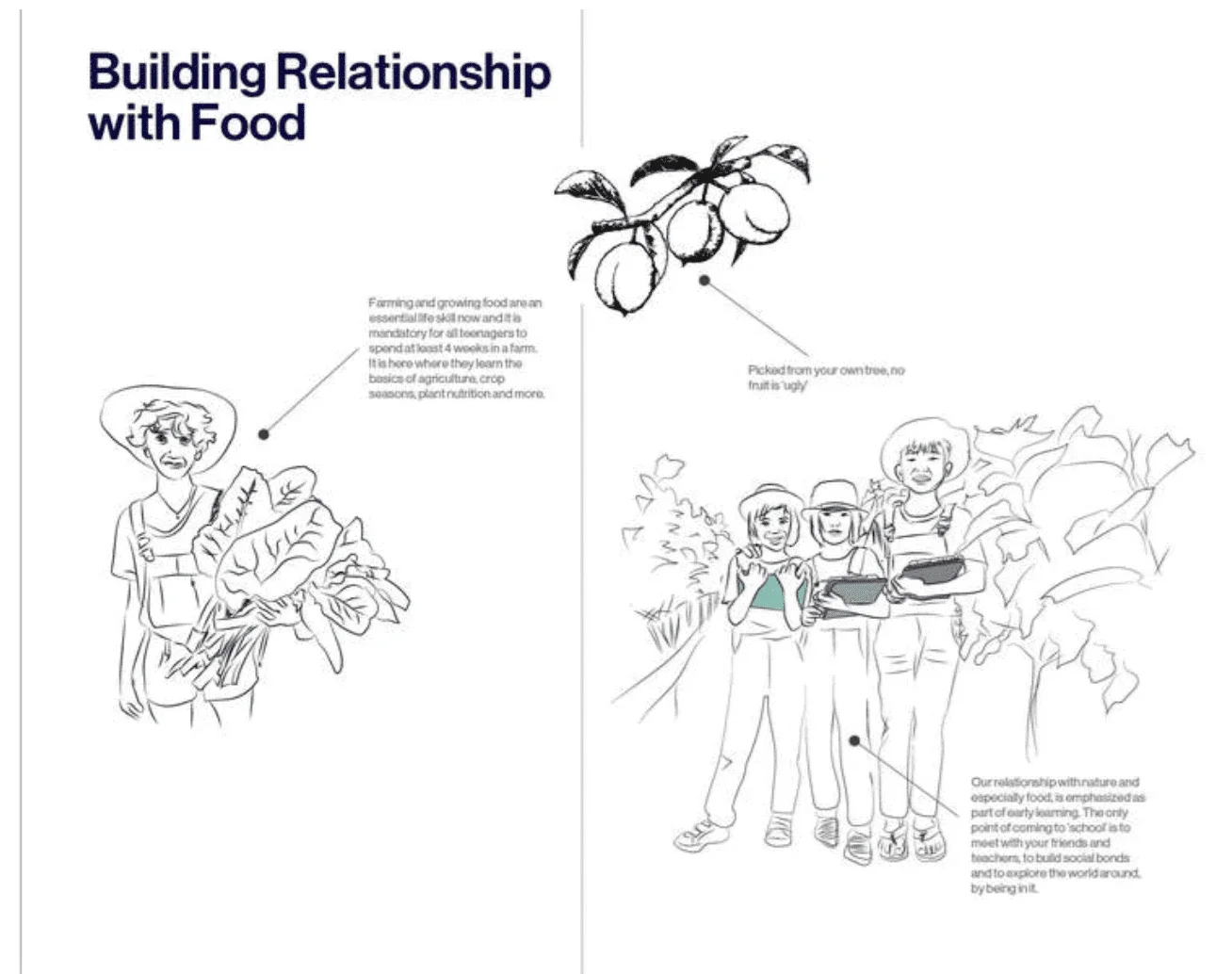This Vision uses a multidisciplinary approach to build a future where safe, healthy, and sustainable diets improve the health and well-being of all Indians.
India’s population, projected to reach around 1.64 billion by 2050, is growing at a rapid pace. The population’s diet is predominantly cereal-based (rice and wheat) and protein-deficient, lacking fruits and vegetables and including an increasing amount of fats and sugars.
Malnutrition is a major challenge: more than 50% of women of reproductive age and children are anemic. The number of people who are overweight or obese has doubled over the last decade for populations in both rural and urban areas, while 25% of children and adolescents in the country are stunted. Despite issues with malnutrition and stunting, 20% of food is wasted nationally, with lack of cold storage as the primary reason for fruit, vegetable, milk and meat waste.
The Eat Right Vision showcases how by the year 2050:
- More Indians have a relationship with how food is grown, distributed and consumed. Almost all community members choose to live or spend more time on farms than ever before, harvesting produce personally rather than purchasing it at stores.
- Biodynamic and organic farming are ubiquitous. A majority of farmers are engaged in organic farming and use a wide variety of alternatives to chemical fertilizers to enrich the soil.
- Drip irrigation and water harvesting have become commonplace, helping India to achieve zero-water wastage.
- Professionals are now part-time proud ‘farmers,’ networking with an ecosystem of responsible producers serving increasingly conscious consumers. This growing set of farmers are reviving extinct seed banks and expanding the diversity of indigenous fruits and vegetables.
- There is food security for all, and hunger and malnutrition are distant memories.
With an initial focus on improving hygiene and sanitation across the value chain, the Food Safety and Standards Authority of India (FSSAI) has trained and certified almost 300,000 Food Safety Supervisors to evaluate and rate food service establishments for proper hygiene and sanitation. The Vision of Team Eat Right India of the Food Safety and Standards Authority of India (FSSAI), Ministry of Health and Family Welfare, Government of India, expands on the work they are already doing to set the stage for an improved future for food.

Additional key team partners include the Network of Professionals in Food and Nutrition – NetProFaN (seven associations covering dietetics, nutrition, medical doctors, public health professionals, chefs and chemical analytics), the State Food Safety Department, and a range of civil society partners.
Click here to explore the full Vision for India in the year 2050.
We have devised five key actions to achieve our Vision: 1) We will create new regulations to promote healthy eating; 2) Train and build capacity of various stakeholders; 3) Certify various food vendors, restaurants and schools for food safety and hygiene; 4) Nudge food businesses to produce healthier options and safe, sustainable packaging; and 5) Ignite social and behavioral change across India.
